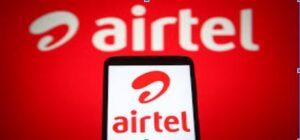The Energy Management System (ENMS) ISO 50001 standard provides organizations with an energy-use management program. Incorporating this standard into practice can lead to companies saving on energy costs, meeting overseas emissions regulations, and demonstrating concern for social responsibilities. But having ISO 50001-certified ENMS in place alone does not lead to efficiency gains. To achieve the best possible energy performance, organizations must make effective use of their systems. This article looks at how to fully make use of ENMS ISO 50001 for maximum efficiency.
- Evaluating Current Energy Use
A basic prerequisite for improving energy efficiency through an ENMS ISO 50001 system is forming a clear picture of current energy use and performance. All energy streams should be taken into stock, and historical usage data should be carefully reviewed. This allows an accurate baseline to be set—a key precondition for quantifying future reductions in energy use. Teams should also study demand patterns to find places of overconsumption and waste. With these insights, organizations can zero in on facilities, processes, or behaviors to improve efficiency.
- Setting strategic energy objectives
With current usage characterized, organizations can establish goals for improving energy performance under ENMS ISO 50001. Objectives should be specific, quantifiable, and aligned with the overarching business strategy. For instance, a company may set targets to reduce total energy consumption by 15% over 3 years. Teams can use insights from energy reviews to identify realistic efficiency opportunities across operations. This facilitates prioritizing efforts based on feasibility and impact. Setting clear objectives is vital for driving organization-wide commitment and developing effective energy management plans.
- Developing Energy Management Action Plans
The next critical step is creating comprehensive ENMS ISO 50001 action plans that map initiatives for achieving defined energy objectives. Organizations should consider potential technical projects such as installing smart building controls, upgrading equipment, or improving waste heat recovery. Teams can also identify behavioral changes or process optimizations to target, including employee energy conservation training or streamlining production procedures. When scoping initiatives, organizations should carefully consider payback periods and use lifecycle cost analysis for major investments. This ensures efforts remain financially viable. Teams must also outline monitoring procedures within plans to track progress continually.
- Driving employee engagement
While technical fixes enable efficiency gains, realizing ENMS ISO 50001’s full potential requires mobilizing organizational culture change. Employees often represent the most significant area for improvement. Organizations should thus invest heavily in engagement initiatives, emphasizing energy management responsibilities at all levels. Strategies may include implementing recognition programs to reward conservation behaviors, running educational campaigns on energy best practices, and sharing progress towards efficiency targets publicly. Embedding an energy-conscious mindset institutionally is essential for meeting objectives sustainably.
- Monitoring Performance with Energy Data Analytics
Ongoing energy data analytics should form the backbone of every ENMS ISO 50001 system. Organizations must closely monitor key metrics like energy use intensity, fuel consumption, and emissions output. Data analytics reveals where planned initiatives succeed or fall short, enabling teams to adjust strategies accordingly. Analytics also helps identify new energy reduction opportunities.
- Utilizing Third-Party ENMS ISO 50001 Expertise
While in-house teams typically coordinate ENMS ISO 50001 efforts, turning to external expertise can further optimize Consultants like INTERCERT bring specialist knowledge for enhancing monitoring procedures, data analytics approaches, and technical facility reviews. They can also advise on improving the integration of energy management initiatives with other organizational functions like operations, procurement, or quality control.
Conclusion
In summary, organizations must dedicate concerted effort to fully utilize ENMS ISO 50001 frameworks if maximum efficiency improvements are to be achieved. This requires establishing strong data-driven foundations and strategic objectives, combined with comprehensive action plans that mobilize technology, process, and culture enhancements. Teams should also leverage internal cross-department collaboration and external expertise to challenge conventional thinking on energy reduction opportunities. With robust execution of these energy management best practices, organizations can realize ENMS ISO 50001’s immense potential for boosting efficiency.











